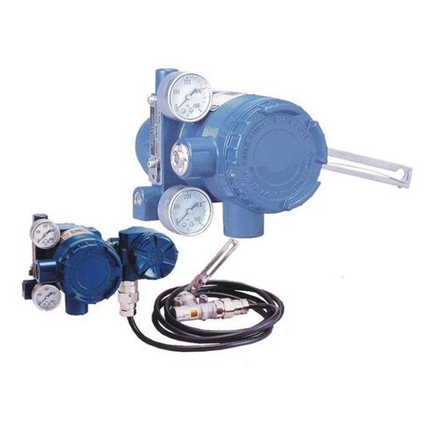Magpie Valve Selection: Accurate Matching Ensures Reliable Control
Valve Technology Sharing
Selection of Feedback Configuration for Explosion-Proof Mechanical Positioners
Split or Integrated? Exploring Feedback Design from Structural Principles to Practical Selection Logic
In hazardous environments such as petrochemical and natural gas industries, valve positioners are critical for achieving precise control. Striking a balance between explosion-proof integrity and feedback accuracy, especially in mechanical positioners, presents an ongoing engineering challenge. A key decision lies in choosing between a separated feedback mechanism and a smart integrated feedback system, each affecting system safety, cost-efficiency, and control precision. This article analyzes the core principles behind explosion-proof design and evaluates both feedback options to guide optimal selection.

At the heart of explosion-proof equipment lies the flameproof enclosure, designed to isolate internal ignition sources from explosive gases. These enclosures must meet IP66 or higher protection levels and withstand static pressure tests at 1.5 times the working pressure. When a mechanical positioner integrates a feedback system (e.g., linkage + potentiometer), two major risks emerge:
Seal failure risk: Moving parts such as linkages must penetrate the enclosure. Improper sealing may create a gas leakage path, reducing the protection level from Ex d IIB T4 to basic protection—compromising explosion-proof functionality.
Static spark hazard: Potentiometer contacts can generate sparks due to friction, especially under vibration. Tests show a spark incidence rate of 0.5 times/hour under dynamic conditions.
According to GB 3836.1 (Explosive Atmospheres), explosion-proof devices must withstand 100,000 cycles of motion without seal degradation. If feedback and positioner are integrated, the frequent motion at the sealing interface can cause premature wear (life span only 10,000–20,000 cycles), failing to meet certification. Therefore, the separated configuration, with the feedback device placed externally, is widely adopted across the industry.
Low hardware cost: Compared to smart positioners with digital feedback (30–50% more expensive), a mechanical positioner with external feedback rod is far more economical, cutting total cost by over 40%. It suits retrofits and small-scale projects (e.g., atmospheric tower valves in refineries).
High compatibility: This setup requires only basic switch signals (e.g., 24V DC dry contacts), easily interfacing with legacy PLC systems without digital-to-analog conversion issues.
Feedback drift and delay: Mechanical linkages consist of two sections (from positioner and valve end) joined via pins, introducing 0.1–0.3 mm gaps. During valve motion, accumulated backlash causes signal delay (0.5–1 s), with valve position errors up to ±5% (e.g., 40% open appearing as 38–42%).
Poor vibration resistance: In offshore or vibrating environments, the feedback rod shifts by ±0.5 mm, causing 1–3% daily signal drift. This drift demands weekly recalibration, one project noted annual recalibration costs equaled 20% of the device's purchase cost.
Reduced explosion-proof reliability: Although the positioner body remains explosion-proof, aged seals (e.g., hardened O-rings) at external feedback interfaces may allow flammable gas ingress (leak rate > 1×10⁻⁶ Pa·m³/s), creating explosion blind spots.
Smart explosion-proof positioners (e.g., digital models) use fully integrated housings, with built-in feedback modules using magnetic coupling or Hall effect sensors (see Figure 2):
Zero mechanical contact: Valve stem motion is sensed via magnetic couplers, eliminating play and achieving ±0.2% precision. One LNG project demonstrated <±0.5% drift over 12 months.
Superior sealing: With pressure-cast enclosures and Ex e explosion-proof terminals, sealing performance improves by 5x, with leak rates below 2×10⁻⁷ Pa·m³/s.
Dimension Separated Mechanical Feedback Smart Integrated Feedback
Explosion-Proof Rating Positioner: Ex d; Feedback: none Fully Ex d IIB T6
Feedback Accuracy ±5% (needs recalibration) ±0.2% (maintenance-free)
Vibration Resistance Drift >5Hz Built-in damping up to 20Hz
Maintenance Cost 20% annually (recalibration) 70% cost reduction
Suitable Scenarios Low-precision, budget-constrained High-precision, high-risk environments
Process type: Non-critical valves (e.g., drain or bypass), low-risk media (e.g., air, inert gas), control accuracy ≤±5%.
Project constraints: Retrofits needing linkage compatibility, strict cost limits (e.g., per valve cost under $1,500).
Safety-critical applications: Shut-off or control valves for flammable/toxic gases (e.g., natural gas, chlorine), requiring SIL2 certification.
High-precision demands: Flow accuracy >±1%, response time <0.5 s (e.g., reactor feed valves, offshore flare valves).
Challenging environments: High vibration (compressor outlets), high humidity (coastal platforms), extreme temperatures (-40℃ to 85℃).
If separation is necessary, reliability can be improved by:
Gap compensation: Add a spring-loaded pre-tensioner (5–10N) to eliminate backlash and reduce drift to ±2%.
Explosion-proof upgrade: Use Ex d certified feedback junction boxes, and dual sealing (PTFE + metallic bellows) to lower leak rate to <5×10⁻⁷ Pa·m³/s.
The debate over feedback configuration in explosion-proof mechanical positioners reflects a clash between legacy mechanics and smart electronics in hazardous environments. Separated designs offer low-cost entry-level control, but suffer from drift and safety blind spots. Integrated smart solutions, while costlier, deliver contactless, reliable, and precise control, ideal for demanding applications.
At its core, industrial automation is demand-driven. When safety and precision are non-negotiable, smart feedback is the cost-effective long-term investment. When budget and legacy compatibility prevail, mechanical separation remains a viable economic fit.
Ultimately, it's not about which solution is "better", but which best aligns with real operational needs. In the explosion-proof domain, "cheap compromises" can become costly risks, while smart investments often yield the highest returns in reliability and safety.
For tailored advice on feedback configuration in specific conditions, feel free to connect. Let every feedback signal be a precise annotation in your control strategy.
